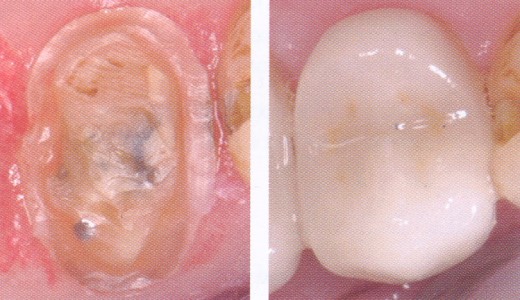
You can sometimes have inlays or onlays instead of fillings to repair
damaged teeth. Fillings are soft to begin with and are moulded in the
tooth which has been shaped to take and hold the filling. Inlays and
onlays are made outside the mouth, usually in a dental laboratory,
and then glued to the tooth in the surgery.
An inlay sits in a hole in the tooth. An onlay sits on the tooth and
builds up its shape. Inlays and onlays can be made in tooth-coloured
porcelain, gold or a white filling material called composite. Different
materials are suitable for different parts of the mouth and different
parts of the teeth.
Your dentist will:
© Stalybridge Dental Care 2009 - 2024
Last updated: 28 November 2023